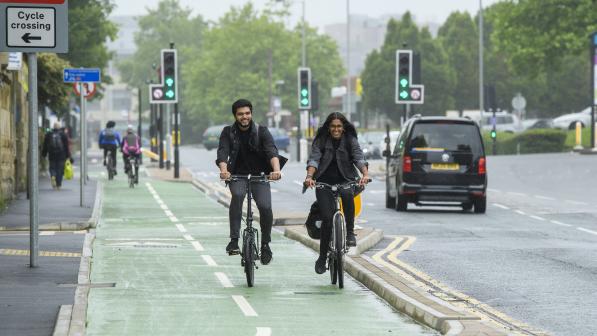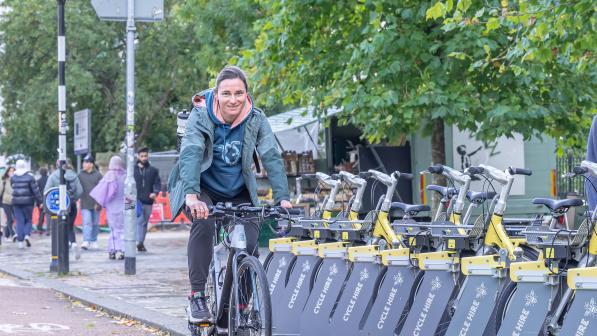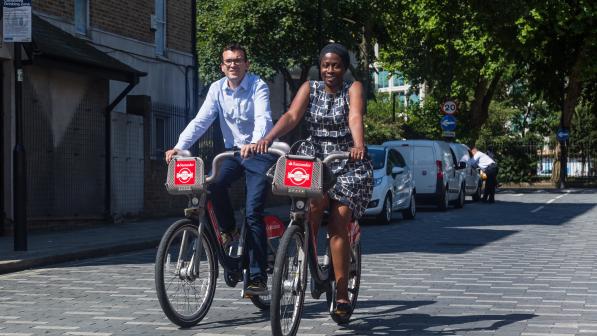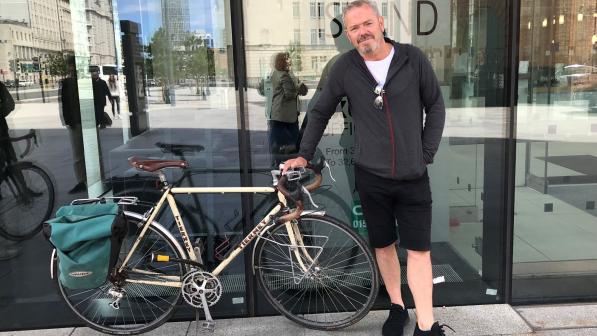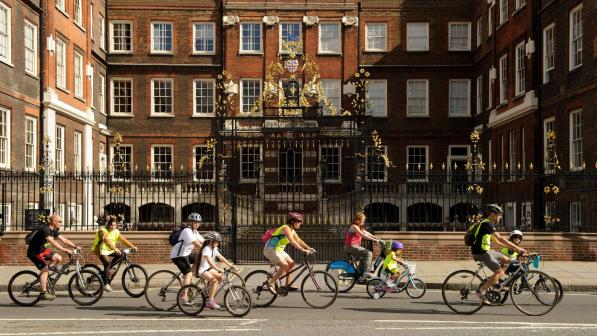Opinion: Ashok Sinha on going Dutch in London
It’s not often you win a £100m programme named after the campaign that led to it, but that’s what happened to London Cycling Campaign (LCC). The Mini-Holland Programme was launched by London Mayor Boris Johnson not long after LCC’s Love London, Go Dutch campaign in 2012 persuaded him (and all the candidates in that year’s election) to ditch the blue paint and Go Dutch.
It’s a story I’ve dined out on ever since (and will no doubt bore people by continuing to do so after my upcoming departure from LCC). But it’s worth recapitulating, not least because so much has flowed from that moment.
When I joined LCC as its CEO late in 2010 the situation was not pretty. The best protection that people cycling could expect was narrow strips of blue paint on the road, with transparent deficiencies.
Plus, the cycling campaign movement was riven between the ‘segregationists’ – proponents of the Dutch approach, in which the backbone of the cycling network is physically protected cycle tracks – and the ‘vehicularists’ who, broadly speaking, contended that success would lie in radical constraints in traffic and sharing road space.
On top of this, the style, tone and imagery of at least LCC’s campaigning spoke more to the revolutionary vanguard than the masses. Something had to change.
Going for broke
Based on my past experience of leading national campaigns, the path ahead was obvious: go for broke and focus every resource we had on a single, compelling political idea; construct a positive, propositional campaign centred on that idea; target the 2012 London mayoral election with the biggest cycling campaign mobilisation the UK had ever seen. Plus – crucially – put the topic of that campaign to the vote among LCC members.
Simple. Except it wasn’t. There was pushback against Go Dutch even being on the slate of choices on the ballot form, with people fearing that it would irreversibly split the movement.
But we went ahead, and Go Dutch topped the poll overwhelmingly. Even then, opponents of the populist approach we sought to adopt condemned it as fluffy, vacuous PR and a waste of resources. The die was cast, however.
The next challenge was tabled by our communications manager who walked over to me, furrowed brow, to ask: “How on earth do we articulate something as complex as cycling infrastructure, area-wide treatments, road space reallocation and the rest?” My answer? “Don’t try. Draw pictures of people and places”.
Following this lightbulb moment we used computer-aided, high-design-value, people-centred redesigns of iconic locations to communicate Love London, Go Dutch, buttressed with high-quality visuals of cyclists representing London’s diversity – with barely any Lycra in sight. An approach largely new and untested for cycling campaigners.
Love success
We succeeded. And the 42,000 people who signed the Love London, Go Dutch petition and 10,000 people who joined the Big Ride just ahead of the election were and remain, I think, high watermarks for UK-wide cycling mobilisations.
In case you find this all a bit of a puff piece for LCC, I’m happy to admit that credit, ultimately, goes first to Boris Johnson.
Palpably restraining his own instincts as to what was required, he honoured his commitment to our three key demands: create three flagship, Dutch-style area-wide treatments; install flagship protected cycle tracks (the ‘North-South’ and ‘East-West’ Cycle Superhighways, now renamed); and adopt international best practice road design (made manifest through the London Cycling Design Standards).
Equal credit goes secondly to Boris’s successor, Sadiq Khan, who accepted and delivered on the three promises we subsequently won from him (and all the other candidates) in the 2016 mayoral contest: triple the mileage of protected cycle tracks in London during that mayoralty (which has reached five times as of today), make direct vision lorries the norm (being implemented through TfL’s Direct Vision Lorry Scheme), and offer every borough the support needed to deliver at least one neighbourhood-level walking and cycling scheme.
Looking ahead
But that was all a long time ago. Where are we now? Politically, the battle has been won at London-wide and national levels about how best to deliver a safe and inviting cycling network (with all due caveats about not taking anything for granted).
Instead we now face granular, borough-by-borough, neighbourhood-by-neighbourhood, school-by-school, street-by-street struggles to win political and public support for contested measures like Low Traffic Neighbourhoods; and at the other end of the spectrum, struggles to win transformative policies such as Smart and Fair Road User Charging and radical traffic restraint.
Happily, the discord between different camps of cycling campaigners has long since evaporated. The climate emergency, air pollution crisis, continuing death toll from road collisions and a crisis of sedentariness together make low/slow traffic shared spaces, protected cycle lanes and a mass expansion in public transport and shared (micro)mobility all absolutely essential.
Our cities must become places where cycling is the natural choice and most citizens need never actually own a car, being able instead to access convenient and affordable motorised transport whenever required. In achieving this we can create safer, happier cities, where the road space liberated is used for communing and play, as well as for greening and enhancing biodiversity, helping us adapt to the level of climate change already baked in.
It’s an exciting and compelling vision, and I’m sure we are all pretty much united around achieving it.
It just shows how, when you start with creating safe Space for Cycling (another LCC campaign of which I’m fond), you end up envisaging and advocating for innovative, human-centred ways of organising urban spaces and empowering local people to fashion vibrant communities that thrive within planetary boundaries.
To campaign for cycling is, as ever, to campaign for something far more than just cycling. That’s why, as I leave LCC, I shall miss it so much.
